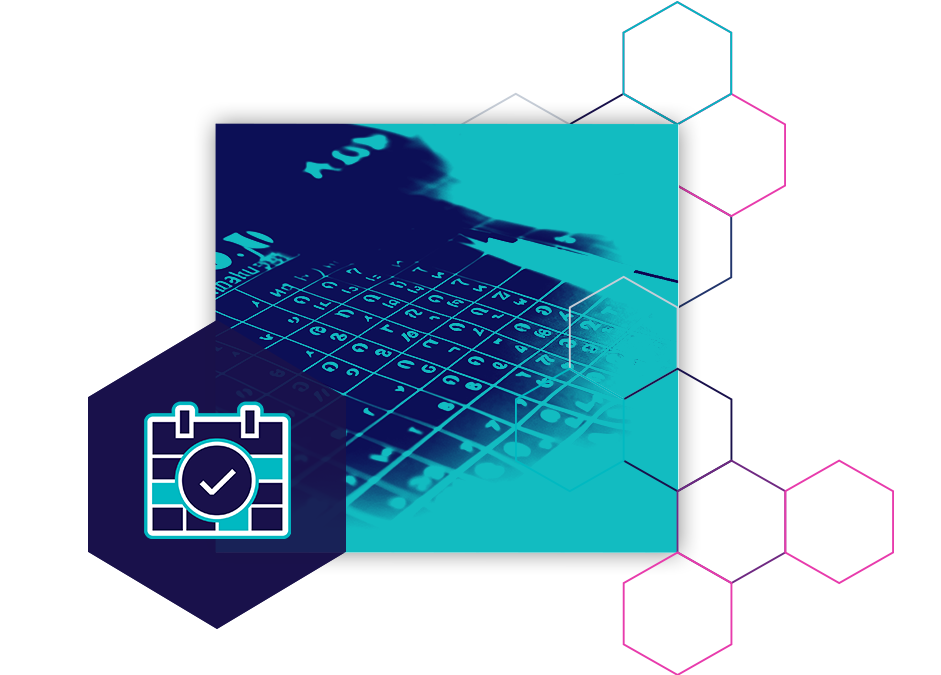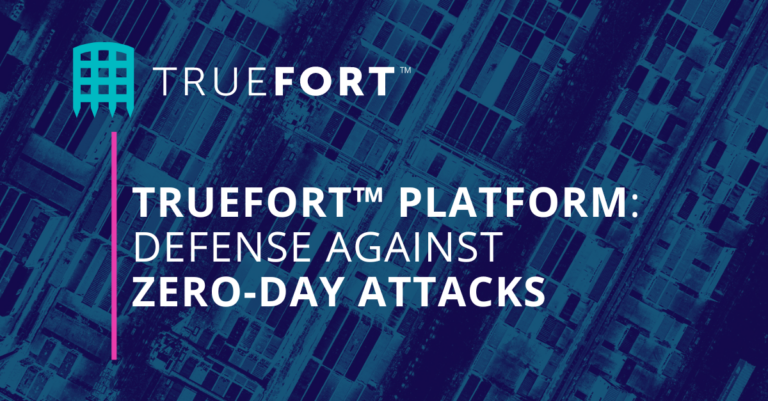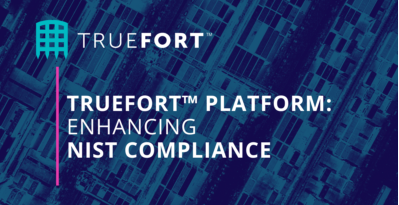TRUEFORT SOLUTION
Mitigating Zero Day Attacks With Advanced Behavioral Control
Zero day attacks exploit previously unknown vulnerabilities in software or hardware, meaning there’s no existing patch or direct defense against them. Vulnerabilities are unidentified until exploited, so organizations are often unaware they’re at risk, making detecting and mitigating such attacks difficult. Most platforms cannot protect against the unknown, but the TrueFort Platform was designed for this.
TRUEFORT SOLUTION
Mitigating Zero Day Attacks With Advanced Behavioral Control
Zero day attacks exploit previously unknown vulnerabilities in software or hardware, meaning there’s no existing patch or direct defense against them. Vulnerabilities are unidentified until exploited, so organizations are often unaware they’re at risk, making detecting and mitigating such attacks difficult. Most platforms cannot protect against the unknown, but the TrueFort Platform was designed for this.
Protecting against zero day exploits and the unknown
- Visibility into applications, their dependencies, and behavior – tracking user interactions, network traffic, and process-level events – identifying hidden vulnerabilities
- Advanced analytics, leveraging machine learning and real-time behavior monitoring to identifying zero day exploits as they happen – for fast detection and response
- Software activity monitoring, based on a reviewed benchmark of approved normal, watching for behavioral changes in legitimate applications if software vulnerabilities are exploited
- Dynamic microsegmentation and granular application controls, limiting the impact of zero day exploits through best-in-class lateral movement protection.

Protecting workloads by knowing and controlling your environment
Use machine learning to learn normal behavior
Leverage TrueFort machine learning to know the patterns of approved commands executed and service accounts used. Any deviation from these patterns could be a signal of a zero day exploit.
Unmatched environment profiling
Complete visibility into applications, dependencies, and workload behavior - monitoring user activity, network flow, and system events to identify actions as they happen.
Fast and actionable warnings
TrueFort’s real-time alerting system informs the security team promptly about potential zero day threats, enabling them to take swift and precise action in real-time.
Segmentation best practices
By isolating workloads and controlling behavior with microsegmentation, breaches are contained and prevented from spreading across the environment if an exploit occurs.
Implement a zero-trust approach
Profile applications and service accounts and define acceptable workload behavior. Verify all requests and actions to avert security breaches in the network or in the cloud.
FAQ
Zero day attacks refer to cyberattacks that exploit unknown vulnerabilities in software, applications, and hardware on the same day these vulnerabilities become known to the developers (hence the term “zero day”).
Since there are no patches or updates to fix these flaws at the time of the attack, zero day exploits can be particularly disruptive and dangerous. Attackers utilize these vulnerabilities to infiltrate systems, bypass security measures, and potentially gain unauthorized access to sensitive information. Companies often race against time to develop and deploy patches once a zero day vulnerability is identified, but until that happens, users are left vulnerable to these stealthy and often highly effective attacks.
A zero day vulnerability attack occurs when cybercriminals discover and exploit a previously unknown vulnerability in software or hardware before the developer has had a chance to create and release a patch.
Essentially, these attacks happen on “Day Zero” of awareness of the flaw, hence the name. Since there is no existing fix or defense against the vulnerability at the time of the attack, zero day exploits can be particularly potent and damaging. They underscore the importance of maintaining updated security measures and vigilant monitoring, as even the most secure systems may be susceptible to unforeseen vulnerabilities.
Preventing zero day attacks can be challenging due to the unknown nature of the vulnerabilities being exploited. However, several strategies can mitigate the risk.
- Keeping all software up-to-date with the latest patches and updates is essential, even though zero day attacks, by definition, exploit unpatched vulnerabilities.
- Security solutions focusing on behavior-based detection rather than signature-based can identify suspicious activities, potentially catching zero day exploits in action.
- Regular security training, robust firewalls, and employing the principle of least privilege (or adopting zero trust) can also strengthen defenses.
- Finally, maintaining comprehensive and current backups can help in quickly recovering from an attack if one does occur.
Mitigating a zero day attack requires a layered approach since these attacks exploit unknown vulnerabilities.
Implementing a benchmark of approved and expected activity can monitor and block suspicious activities. Microsegmentation (granular zero trust) best practices can provide zero day attack mitigation and zero day attack detection until an official patch is released. Even though they might not directly counter a zero day exploit, updating antivirus and anti-malware tools helps maintain overall security hygiene. Employing a strategy of defense in depth, using firewalls, network segmentation, and practicing the principle of least privilege can limit potential damage and be a helpful zero day attack solution. Regular monitoring and real-time incident response are also key to zero day attack prevention.
Zero day attack protection involves a combination of proactive measures and reactive readiness. Since zero day attacks exploit unknown vulnerabilities, focusing on overall security hygiene is crucial.
Regularly updating all software, using reputable security tools that emphasize behavior-based detection, and employing a robust firewall can create strong defensive layers and help to prevent zero day attacks. Practicing the principle of least privilege ensures that it’s contained if a breach does occur. Security awareness training for employees can act as a defense against zero day attack. Finally, having a well-structured incident response plan, including frequent backups, ensures that the organization can recover with minimal damage if a zero day attack in cyber security does occur.
Resources













